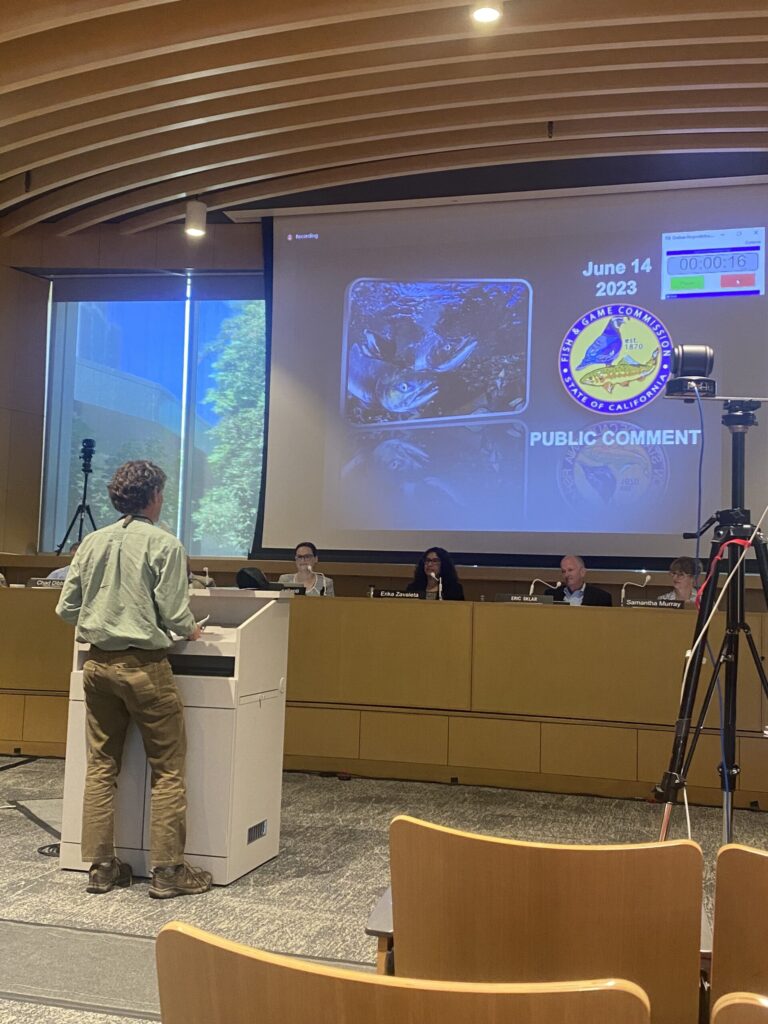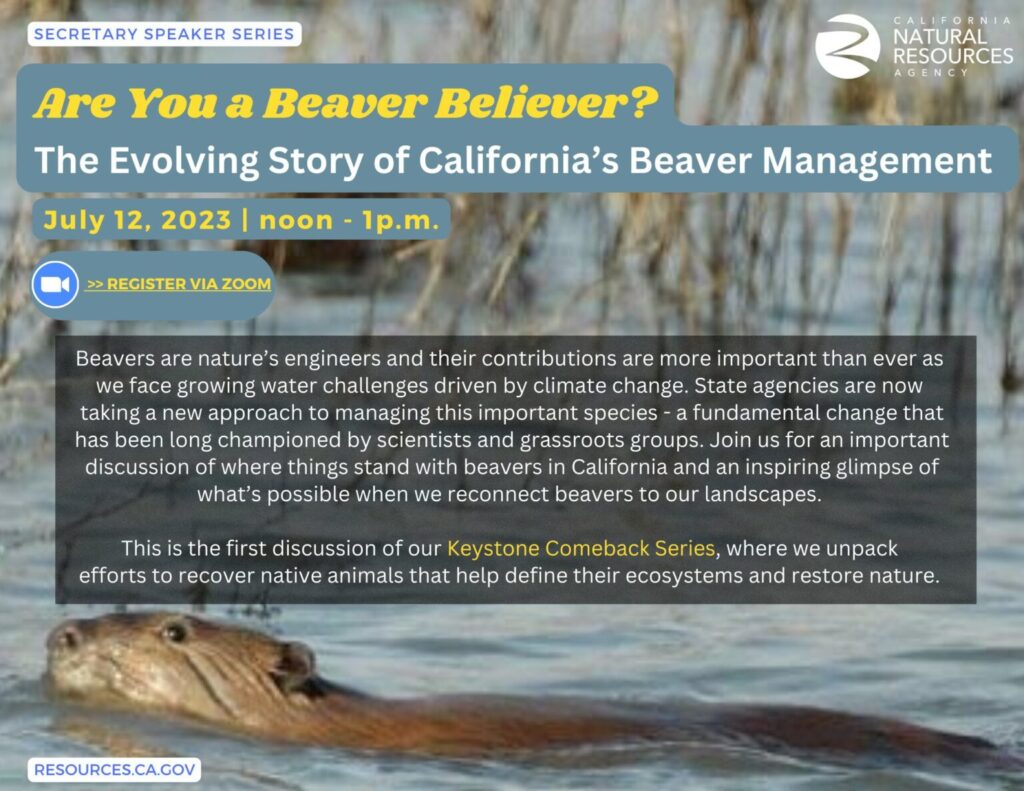 Last month Brock Dolman of the Occidental Arts and Ecology Project spoke to the the California Fish and Game Commission and offered public comment on the new depredation policy for beavers in the state. Both he and the advocate Jennifer Fearing described how enormously hopeful and positive they felt about the changes and one commissioner even praised Brock for his leadership on the matter.
Last month Brock Dolman of the Occidental Arts and Ecology Project spoke to the the California Fish and Game Commission and offered public comment on the new depredation policy for beavers in the state. Both he and the advocate Jennifer Fearing described how enormously hopeful and positive they felt about the changes and one commissioner even praised Brock for his leadership on the matter.
“Brock, I want to thank you for your leadership on this. I remember our first conversation about eight years ago when I first got on the commission. It’s folks like you who have passion and are tireless and resilient on these issues that make things like this happen. So thank you for your efforts.”
—Eric Sklar, President of the California Fish & Game commission
It’s a high water mark for beavers, to be sure, but I still can’t help being impatient and doubtful that it will change much down until we see it unfold and get the numbers on paper. Jennifer Fearing said she was giddy about the change. Why aren’t I giddy? When I considered my grumpy hesitancy I thought again of this passage I wrote years ago.
One of my favorite scenes in Ken Burns National Parks Series “America’s Best Idea” comes around the fourth episode when John Muir finally got president Roosevelt to Yosemite. The president and his people went out to see the park for himself. It was a huge Huge victory for Muir, The culmination of many years work. And that night John and Theodore slipped away by themselves to camp under the redwoods.
Think about that. Getting the most powerful man in the world to sneak away with you for a night in the redwoods where you can show him the most beautiful thing you care so passionately about with zero distractions. Yosemite will be protected. You are getting everything you want.
And that night as they lay in their bed rolls, just the two of them, under the trees with the tiniest of stars peeping between the branches, John Muir said to the president of the united states:
“Are you still hunting? You should stop that. There isn’t enough big game anymore and it just destroys the population.”
Because that’s what advocates do. We push and push and push and never get everything we said we wanted and we keep pushing for more. And that’s what it takes.
Endless Pressure. Endlessly Applied.
Once upon when Martinez agreed to do the right thing I was capable of thinking we “Turned a corner” and “Won the battle”. What I learned was that there were an unlimited number of more corners to navigate and that the battles were endless. Beavers have merely earned the right to step into the arena. A space at the table if you will. Okay that’s a big deal. There’s still a lot more to do.
I liked Brock choice of quote here, David Orr:
“Hope is a verb with it’s sleeves rolled up”
Let’s get to work California. Beavers have been waiting for you to join them. Sign up for the webinar on Beaver Policy this wednesday at noon.
Catch WATER Institute’s Kate Lundquist at the next Secretary Speaker Series webinar, hosted by California’s Natural Resources Secretary Wade Crowfoot, on Wednesday, July 12th from 12 noon – 1 pm.
The topic, “Are You a Beaver Believer? The Evolving Story of California’s Beaver Management” will feature a candid discussion of where things stand with beavers in California and an inspiring glimpse of what’s possible when we reconnect beavers to our landscapes.
Zoom registration: https://ca-water-gov.zoom.us/webinar/register/WN_KYAnlLA9Rg-GevAHBD4n1w
The event is public, live-streamed on YouTube, and recorded for later viewing.




 One of the very first canoe trips we took back in the 90’s was along Tomales creek outside Pt Reyes National Park. It was so early in the story and we were so ignorant of everything that we were not surprised to learn from one of the old timers we met along the way that a beaver dam that would have blocked our progress was just ripped out the day before by a neighbor.
One of the very first canoe trips we took back in the 90’s was along Tomales creek outside Pt Reyes National Park. It was so early in the story and we were so ignorant of everything that we were not surprised to learn from one of the old timers we met along the way that a beaver dam that would have blocked our progress was just ripped out the day before by a neighbor. The first time the “Bioneers” conference appeared on this website was 2010. In 2009 Brock Dolman had presented and mentioned the importance of beavers. It was surprising news at the time. But it is mainstream today. Because that’s the way change happens, slowly at first, and then all at once.
The first time the “Bioneers” conference appeared on this website was 2010. In 2009 Brock Dolman had presented and mentioned the importance of beavers. It was surprising news at the time. But it is mainstream today. Because that’s the way change happens, slowly at first, and then all at once. California is a biodiversity hotspot, but its complex ecosystems are some of the first to model the consequences of a warming atmosphere. Wildfires are currently raging throughout California, burning through hundreds of thousands of acres and spreading rapidly. Climate change is fueling these wildfires — a problem that will only continue to escalate as the environment becomes drier and hotter.
California is a biodiversity hotspot, but its complex ecosystems are some of the first to model the consequences of a warming atmosphere. Wildfires are currently raging throughout California, burning through hundreds of thousands of acres and spreading rapidly. Climate change is fueling these wildfires — a problem that will only continue to escalate as the environment becomes drier and hotter.





































